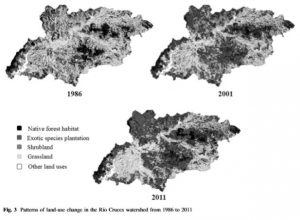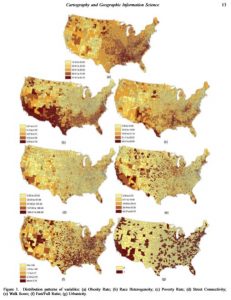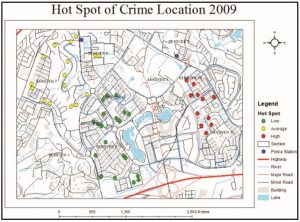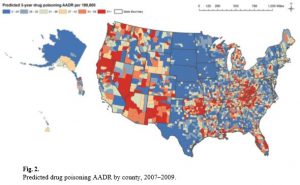Three GIS related reading reviews were conducted over the term to show students the wide range of GIS applications. As was shown through all of the presentations, even within topics, such as landscape ecology, there is a wide variety of ways in which GIS can be applied to aid in the study of geographic datat. Each reading review fell under a certain topic:
Reading review 1 – Landscape ecology and GIS
Reading review 2 – Health Geography and GIS
Reading review 3 – Crime analysis and GIS
A link to each paper review can be found below.
Reading review 1 – Landscape ecology and GIS

Title: Impact of land-use change on biodiversity and ecosystem services in the Chilean temperate forests
Authors: James Rodríguez-Echeverry, Cristian Echeverría, Carlos Oyarzún & Luis Morales
Click this link for the paper review summary: Assignment 1
Reading review 2 – Health Geography and GIS
Title: GIS-based analysis of obesity and the built environment in the US
Authors: Yanqing Xu & Lei Wang
Click this link for the paper review summary: Assignment 2
Reading review 3 – Crime analysis and GIS
Title: The Crime Ecology: Ambient Temperature vs. Spatial Setting of Crime (Burglary)
Authors: Siti Aekbal Salleha, Nur Suhaili Mansora, Zaharah Yusoffa & Rabiatul Adawiyah Nasirb
Click this link for the paper review summary: Assignment 3
As well as the three papers discussed above, another paper that I found particularly interesting was summarized and presented by Templar Bacha & Camille Potier.
Title: Hot spots in mortality from drug poisoning in the United States, 2007-2009
Authors: Lauren M. Rossen, Diba Khan & Margaret Warner
Why did I like this presentation?
Drug poisoning is becoming an increasing issue, especially in Vancouver. Another drug related death is on the news almost everyday on news channels that cover British Columbia. So, it is interesting to see that papers like above, which was published a few years ago now, in 2013, predicted drug poisoning zones. Although this study was based in the US, it is interesting to see a GIS approach to predicting a country wide prediction of drug poisoning. Also, I had never heard of the method used in the analysis, Generalized Linear and Latent Mixed Modeling (GLAMM). There was a large number of demographic factors that were included as inputs for the analysis.



